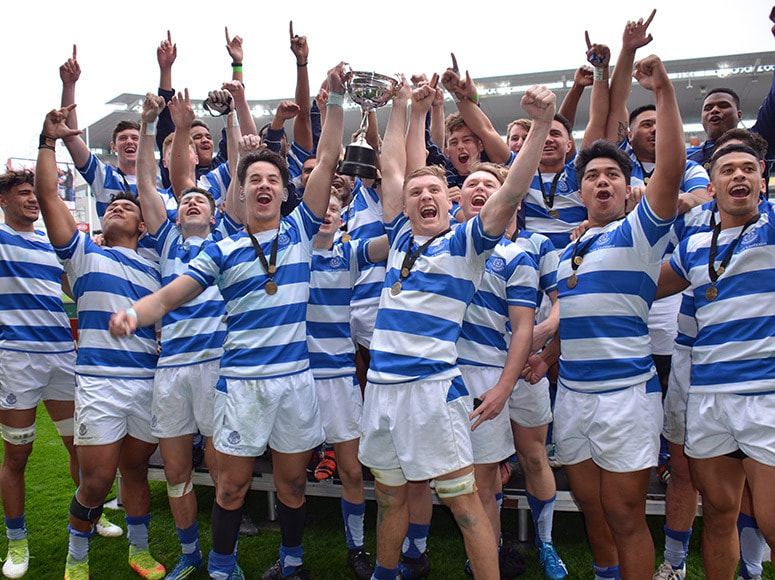 What do Waiopehu College, Putaruru High School, Mana College and Cargill High School all have in common? They are small, coeducational state schools who have produced All Blacks. With very rare exceptions, it’s unlikely the aforementioned schools will ever produce such athletes again. Reaching the elite level of New Zealand rugby has become increasingly exclusive and inaccessible. While First XV rugby grapples with the demands of professionalism, it has struggled to maintain equality of competition and opportunity. This fact is best illustrated by the recent naming of the New Zealand Secondary Schools’ development squad. A total of 53 players were selected - 21 of whom were from six private schools: Saint Kentigern College, King’s College, St Peter’s School, Cambridge, St Paul’s Collegiate, Scots College and Christ’s College. According to the Ministry of Education just under five percent of all students in New Zealand attend private schools. Removing preparatory, girls and special character schools, there would be no more than 20 boys First XV’s among New Zealand’s private high schools, yet nearly half of the contenders for the final New Zealand team this year were from private schools. In the final New Zealand Schools' squad announced this afternoon a record 11 out of 26 boys were from private institutions. St Peter’s College (a Catholic state boys school in Auckland) won the National Top Four Championship. Captain Niko Jones was the only player selected for the New Zealand camp. Saint Kentigern College (in the same city) had eight picks. It costs $20,569 annually for day students to attend St Kent’s. St Kent’s didn’t win the local championship, despite going through the round robin undefeated. St Kent’s generous distribution of scholarships didn’t necessarily guarantee success. The proliferation of private school boys in the New Zealand Secondary Schools’ team is one of the obvious signs going to the ‘right school’ is increasingly important for getting a look in at the top level. A total of 106 private school boys represented the New Zealand Schools’ from its inception in 1978 to 2017. Between 1978 and 2008 there were 64 private school boys who played for New Zealand. There were only 13 between 1978 and 1990 with none between 1981 and 1984. Even as recently as 2010 not a single private school boy was selected for the final New Zealand Schools’ squad. Between 2011 and 2017 there have been 41 private school boys represent New Zealand. The ability to offer scholarships combined with superior resources and apparently better coaching offers obvious appeal for aspiring professionals, but are private schools really that much better? Zarn Sullivan moved from Napier Boys’ High School (a state school) to King’s College and made the New Zealand Schools'. King’s lost the 1A Auckland final, Napier lost the National Top Four final. Had Sullivan stayed in the Hawke’s Bay, it’s highly likely he would have made the New Zealand Schools’ anyway. The smaller concentration of talent isn’t merely confined to private schools. Attending the ‘right’ state school is essential for getting ahead. Since 2003, Hamilton Boys’ High School have produced 35 New Zealand Secondary Schools’ representatives. Cambridge High School brothers Luke and Mitchell Jacobson are the only boys not from Hamilton or the two private schools, St Paul’s Collegiate and St Peter’s School, Cambridge to be selected for the New Zealand Schools’ from the Waikato in this period. In the Waikato there are four schools who don’t even compete in the local First XV competition. Hamilton Boys’ are superbly coached by Nigel Hotham and Greg Kirkham and have a number of strategic advantages which help their First XV program flourish which include: a hostel, a large roll, historical success and a strong relationship with leading Fijian schools and the Chiefs Super Rugby franchise. Similarly down south the only non-Otago Boys’ High School player in the last decade to make the New Zealand Secondary Schools’ is Gavin Stark from Blue Mountain College. Auckland Grammar School and Westlake Boys’ High School are two reputable state schools with a strong rugby reputation. As of February 2017, the average house price in the Auckland Grammar zone was $2.16 million and Westlake’s was $1.94 million. Attending certain state schools is becoming increasingly inaccessible to the average income earner. In Australia and England rugby has almost always been the domain of wealthy private schools. New Zealand’s more egalitarian model has been seen as an advantage over our rivals. Rugby in New Zealand is no longer a ‘common man's’ game. Satisfying the demands of ‘high performance’ while also keeping boys without the privileges of a select elite in the game is a major challenge. In June 2018, New Zealand Rugby announced a review of Secondary Schools Rugby in New Zealand. The final report and recommendations will be published in December. Addressing the inherent class structure that now exists in the game is perhaps the biggest challenge rugby has faced for some time. |
Archives
October 2023
Categories |
OrganisationCollege Sport Media is dedicated to telling the story of successful young sportspeople in New Zealand
|


 RSS Feed
RSS Feed